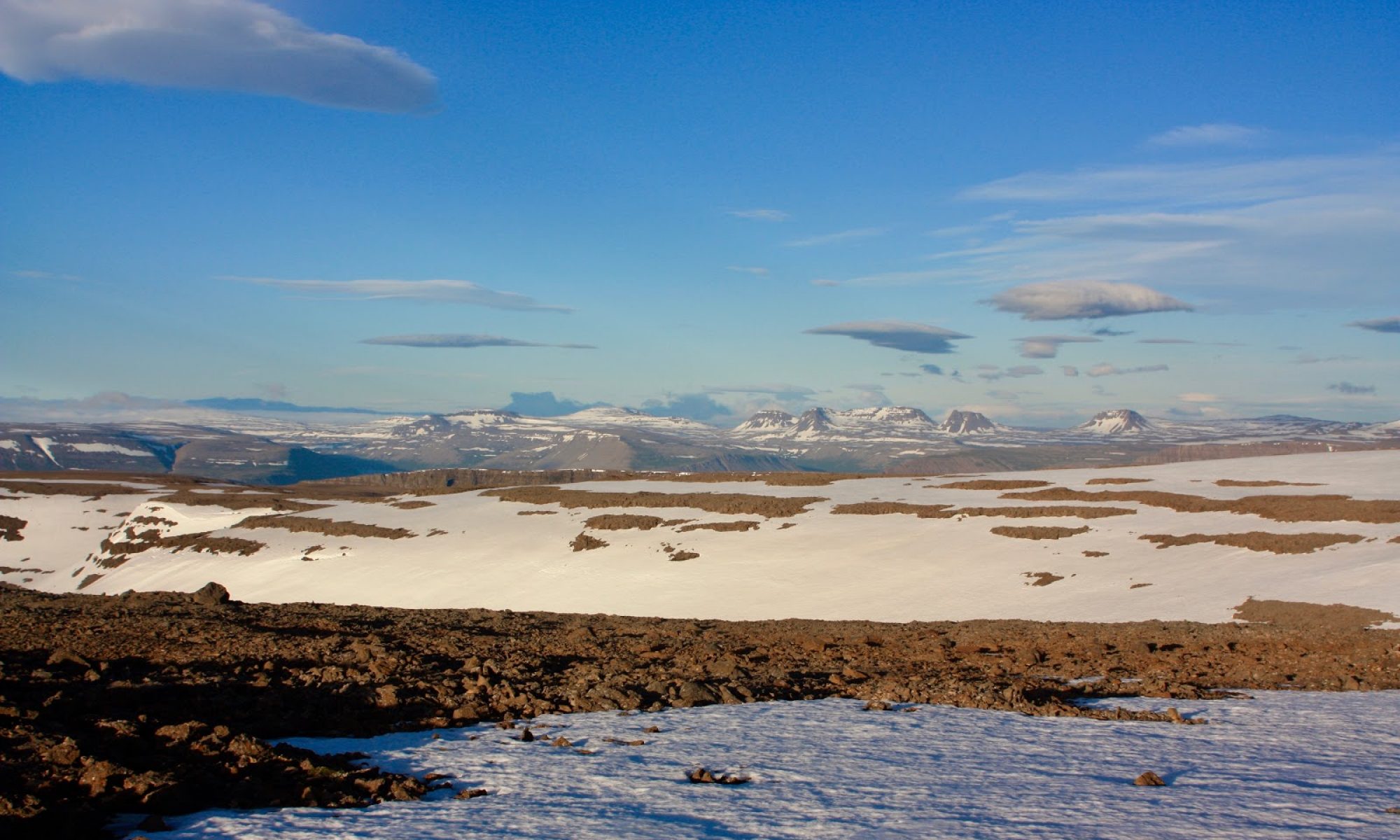Excerpts
Sacred Mountain

The San Francisco Peaks, from the summit of Merriam Crater, looking across the cinder hills of the San Francisco Volcanic Field.
“My local pride only grew when I learned that the scientist who came up with the idea of life zones was C. Hart Merriam, who lent his name to Merriam Crater and Hart Prairie—familiar places we went to on Sunday afternoon drives. I think, from an early age, I associated the volcanoes all around me with both the hold-in-your-hand epiphanies of science, and the harder to grasp but no less real power of sacred stories.”
Ambling Through Washes

A slope of cinders with an outcrop of Moenkopi sandstone, Deadman Wash.
“The basalt mesa drops away, and low benches of sandstone replace it. Rusty orange boulders lay scattered across gentle slopes of cinders. The lovely combination of colors is due to a blend of geology and vegetation that I think of as unique to a small swath of country that marks the meeting of the San Francisco Volcanic Field and the Painted Desert.”
Three Canyons

Ponderosa pine and Coconino sandstone reflected in pool, West Clear Creek Canyon.
“West Clear Creek snakes its way through a splendid narrow canyon for thirty miles before widening out to a broad desert canyon in its lower ten. In its upper and middle course, West Clear Creek is lush, remote, difficult to travel through, and stunningly beautiful. Hikers who venture the full length of the canyon have to swim through pools where the canyon walls completely hem them in.”
Synecdoche

The Yellow Aster Tarns in late summer.
“I love the word tarn. Makes me feel like a pirate to say it. Tarrrrn! I love, also, what the word designates: an alpine pool smaller than a lake but bigger than a puddle. A more persnickety definition requires an association with a glacier, but in common usage, a tarn is simply a tiny mountain lake. There is an intimacy to tarns, a blessed obscurity related to abundance. In a bumpy granite basin filled with tarns, each one is unique. As individuals, they won’t make it onto calendars, but each one is a gift. Nature is generous beyond measure.”
In Lage’s Country

In the heart of Lage’s country. Golden Horn to the left, and splendid Tower Mountain to the right. The photo is taken from the summit of South Early Winters Spire.
“Not far to the southwest of Mount Lago, perhaps 20 miles as the crow flies, is a beautiful, dominant peak that rises above the many peaks in its neighborhood. It is Tower Mountain, and it is one of my favorite summits in a region where spectacular peaks are abundant. Tower is smack-dab in center of Lage Wernstedt’s territory. In every direction from Tower’s summit, the highest and most splendid summits visible all felt the footprint of Lage’s boots ninety years ago.”
Blessed by Water

Upper Silent Lake. This lake is one of the highest in the North Cascades, and typically is not ice-free until the beginning of August.
“I didn’t know that my yearly visits to this place would begin to feel like a pilgrimage, and that a pair of lakes nestled up on the high divide between Fisher Creek and Grizzly Creek would assume an especially important place in my heart. Upper Silent Lake is on the short list of places where I can imagine my ashes scattered after my death.”
Winter Flowers

Tufted Alpine Saxifrage growing out of lava near the volcano Katla. It is a close relative of the Purple Mountain Saxifrage, the “Winter Flowers.” Several species of saxifrage thrive in the harsh environment of Iceland’s lava flows and scree slopes.
“Saxifrage is Latin for Stone-breaker. A strange name for a plant so small and a flower so delicate. It lives in the coldest, most barren, most inhospitable places imaginable, including cracks in cliffs where its long taproot tenaciously, quietly, imperceptibly widens the crack. It earns its name in subtle fashion; you could watch it for years and never actually see a stone break.”
Westfjords

The entrance to Skrúður Botanical Garden, near Þingeyri. Skrúður is both the oldest and most northerly botanical garden in Iceland.
“To me, the psychological impact and appeal of Skrúður is derived from contrast. On one side of the whalebones: exposure, wildness, severity. On the other side: shelter, domesticity, gentleness. Which is more lovely, the inside or the out? The question is a false choice. My soul needs, at times, the garden; at other times, the tundra.”
The Fire Priest

Ephemeral rivers appear and then disappear on the Brunahraun, near the site of Jón Steingrímsson’s showdown with the lava.
“The miraculous part of the story, in a highly condensed version, goes like this: In the year 1783, an Icelandic volcano known as Laki sent a greedy tongue of lava toward the village of Kirkjubæjarklaustur. When lava threatened to engulf the church—with all of the villagers inside—the Lutheran pastor Jón Steingrímsson prayed and preached with great passion and vigor until the river of molten rock hardened into a wall, sparing the huddled parishioners.”
